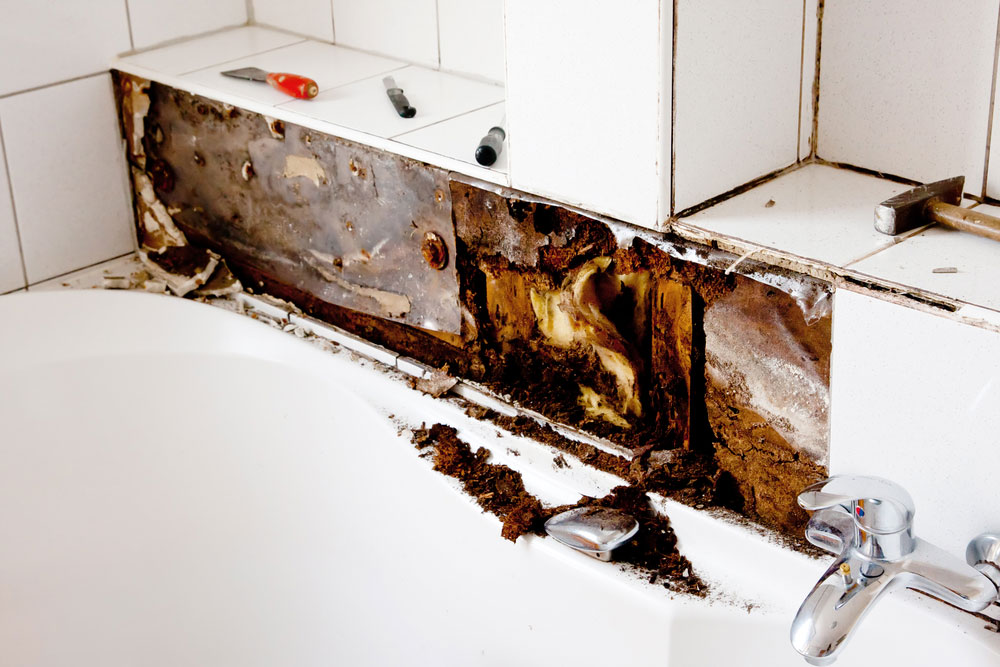The article listed below pertaining to How to Fix a Water Damage Bathroom is totally interesting. You should read it.

The restroom is incredibly vulnerable for moist accumulation and potential water damages as a result of the constant use water in it. This post uses simple evaluation techniques to aid finding water damage hazards.
The constant use water in the restroom makes it extremely at risk for damp accumulation and also possible water damage. By inspecting it consistently, you can minimize water associated problems.
The complying with set of assessments is simple to perform and need to be done when in every three months in order to maintain your restroom in good shape as well as to prevent possible water damages caused by the bath tub, the shower, pipe joints and also plumbing, sinks, cupboards, and the bathroom
Do not overlook executing these evaluations and also be comprehensive while executing them. Bear in mind that these easy examinations can conserve you a lot of cash by offering early signs for water damage
Sinks and also Cabinets
Sinks as well as cabinets are revealed to moisture and also humidity daily as well as are frequently forgotten. Examine regularly under the sink and also on the countertop over it. Repair any kind of drip in the trap as it might suggest drainpipe problems. Check out the sink, sluggish draining pipelines may show a blocked drainpipe. Replace sink seals if they are fractured or loose.
Bath tub and Shower
The shower and also bathtub call for special interest and upkeep. Examine the ceramic tiles and also replace if fractured. Make sure that there is no missing out on grout between the floor tiles. Examine and also replace broken caulking at joints where the wall surfaces meet the flooring or the bath tub. Blocked drains pipes and pipes troubles will stop the bath tub from drying as well as might indicate severe troubles below the tub. Seek advice from a professional promptly to prevent structural damages. Take notice of discolorations or soft areas around the tub walls as they might show an inner leakage.
Plumbing
Signs for water damage are hard to discover considering that the majority of pipelines are installed inside the walls.
Pay special attention to floor covering and walls wetness and also discolorations as they may indicate an undetectable plumbing trouble. Examine moisture levels in adjoining spaces also.
The Bathroom
The bathroom is a prone water joint. Check the water lines and search for leaks around the bathroom seat, in the pipe, and also under the water container. If you detect any signs of wetness on the floor around the toilet, check for leaks in the toilet edge and also container seals.
Realize that hanging commode dish antiperspirants boosts the possibilities for blockages.
Water Damage Signs In The Bathroom To Avoid Cleanup
Musty smell
This is one of the easiest signs to catch because musty smells are so odorous. The damp, earthy, moldy smell should be a big red flag. The smell will develop when moisture gets trapped in surfaces, and begins to facilitate mold growth. Leaking pipes under cabinets, inside walls, and behind shower fixtures will cause moisture to stay trapped and not dry, which will lead to mold growth and spread. As soon as you notice any musty smells in your bathroom, have it checked for hidden water damage and cleanup signs.
Visible mold
If the smell isn’t there to give it away, sometimes you will actually see mold growth. Finding mold in your bathroom is a serious problem, because mold is very harmful to your health. By the time mold growth is visible, it also means that water damage has already occurred and been present for some time. The only way the mold problem can be resolved is to find the source of the moisture and get it stopped. To safely and adequately remove mold, you need to have professionals handle the remediation. Do not waste any time in getting mold problems addressed, fixed, and sanitized so that you can protect you and your family from the many respiratory symptoms caused by mold exposure.
Damaged floors
Bathroom floors should be able to withstand some exposure to water while still remaining in good condition. However, when excess exposure or water leaks occur, they will begin to damage even the most water-resistant flooring. If you notice any cracking, bubbling, staining, or warping on your bathroom floors, there is probably a water leak somewhere causing the distortion. If you notice areas of the floor have become softer, or even have a spongy feeling, there is probably damage to the subfloor. Subflooring is typically made up of plywood. When plywood is exposed to water or moisture, it will absorb it. Once it has become saturated, the weight of the excess water will cause the wood to swell and soften. Check the floors in your bathroom frequently to catch any of these sings before they lead to damaged subflooring.
Changes on walls
When water leaks behind walls, it will cause changes in the drywall. Peeling plaster, blistering paint, and soggy wallpaper are all good indicators that excess water is building up behind the wall. Water leaking behind drywall will cause it to swell and be soft to the tough. If you start to notice gaps along the trim of your walls, or where tile meets the wall, it could also be a strong indicator that there is a leak behind the wall. Any changes, distortion, or damage on the walls should be evaluated as soon as you notice it to prevent further water damage and cleanup.

I recently found that blog posting about How to Fix a Water Damage Bathroom when doing a search on the web. Appreciated our piece of writing? Please share it. Let another person discover it. Many thanks for your time. Come back soon.
Request Your Service
Comments on “Usual Root Causes Of Water Damage in a Bathroom”